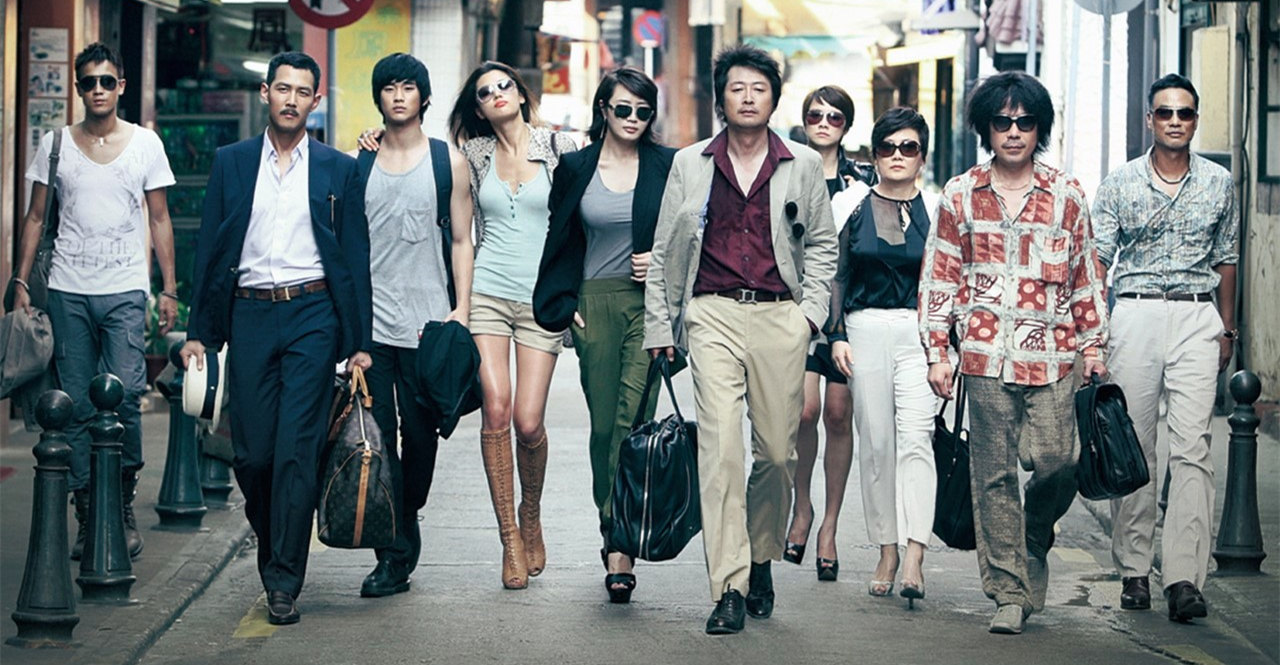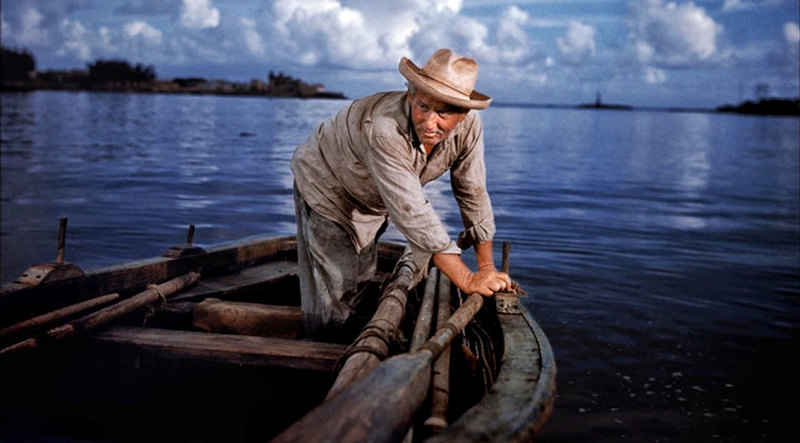In 1939, “Stagecoach” became the first so-called “adult” Western, bringing a new kind of complexity and seriousness to a genre that had mostly wallowed in B-movie Gulch. But it took television a while to catch up—the mid-‘50s, to be precise. “Gunsmoke” and “The Life and Legend of Wyatt Earp” were the first adult TV Westerns, followed by “Dick Powell’s Zane Grey Theater” a year later, and “Maverick” in 1957. But “Maverick” added a new wrinkle: tongue-in-cheek humor.
It began with a wink in the early going, but by the end of the first season that tongue was firmly planted. Case in point? In an episode titled “Black Fire,” Maverick posed as one of the heirs called by a millionaire to his ranch for presumably a decision on his inheritance. But, in a subtle take-off on the classic murder mystery, the heirs start disappearing or turning up dead. And when Maverick finally solves the case, he quips, at the end, “The Butler did it.”
James Garner was fortunate enough to star in two hit TV series: “The Rockford Files” (1974-80), and before that, “Maverick”—though a contract dispute would cut short his cowboy stint after the third season. But as Bret Maverick, an itinerant gambler who pinned a thousand dollars to the inside of his coat and road from town to town looking like a saddle tramp before changing into more gentlemanly duds, Garner quickly became a fan favorite. Bret Maverick was suave, he was cunning, he handled himself as well with a gun as he did with the ladies, and as a gambler he was as honest as they came—so honest that it was his unofficial mission to bring down anyone who was a cheat, a bully, a town boss, or a reprobate of any kind.
When Jack Kelly was introduced as brother Bart Maverick in the eighth episode, it remained clear that Bret was still the one with the most charisma. After that, some of the episodes featured both brothers, while others were written with only one in mind. And in the case of that “Butler did it” episode, Bart does the voiceover narration for an episode featuring Bret.
The thing that stands out about “Maverick” is the intricacy. Don’t look for simple formulaic plots, because you won’t find them. Unlike shows that relied on a room full of writers, “Maverick” drew its inspiration from short stories published in Western magazines—some, by writers as big as Louis L’Amour. It’s one big reason why this show is so flat-out interesting every episode. The stories are more complex, the writing is stronger, and it all boils down to something you just don’t see in too many TV series: interest. Each episode holds your interest. Even when some of the lines seem hokey or the characters seem borderline caricatured or melodramatic, the heady nature of the scripts allows you to overlook such things.
Not bad, for a character who got his start as a guest star on another Warner Brothers Western series—“Sugarfoot,” starring Will Hutchins. And 16 years before Garner would star with a camel in a film called “One Little Indian,” he was riding an old humpback named Fatima in a Season 1 Maverick episode. From episode to episode you never knew what sort of adventures Bret and/or Bart would encounter, and it was all part of the fun. Gamblers by profession and con men when they needed to be, the two brothers coolly helped others while helping themselves. And isn’t that the American way?
Twenty-seven episodes are included on seven single-sided discs, housed in an oversized keep case with plastic pages to hold all but the seventh disc (which is affixed to the back inside cover).
“War of the Silver Kings.” After beating the town’s most powerful man in a poker game, Bret ends up in a scheme that’s either going to make him pretty rich . . . or pretty dead.
“Point Blank.” A beautiful woman springs Bret from jail, plotting with her boyfriend (Michael Connors, “Mannix”), to frame him in a deadly scheme.
“According to Hoyle.” Bret tests his sure-fire poker playing skills on a riverboat and ends up cleaned out by a beautiful, resourceful, and very slick southern belle.
“Ghost Rider.” Ghosts appear and vanish after Bret is hijacked by a crook (Edd Byrnes, “77 Sunset Strip”) and then conned by his wife—both of whom are supposedly dead.
“The Long Hunt.” Fulfilling a dying man’s last request, Bret sets off to free someone wrongly accused of a crime that the man committed.
“Stage West.” Coming to the aid of a widow, Bret helps her reclaim her dead husband’s gold strike and ends up having to draw his gun instead of a poker deck.
“Relic of Fort Tejon.” The Arabian stallion Bret wins in a poker game turns out to be an overly affectionate camel, who just won’t take no for an answer.
“Hostage.” Bret’s brother Bart makes his first appearance as the brothers scheme to get onboard the maiden voyage of a riverboat that’s full of rich pigeons ready to be plucked.
“Stampede.” Jim Buckley (Efrem Zimbalist Jr.) debuts as someone who lures Bret into a boxing match he can’t win.
“The Jeweled Gun.” Bart goes solo in an episode in which he’s hired to pose as the husband of a woman he can’t help but fall in love with.
“The Wrecker.” The Maverick boys find themselves caught up in a wild moneymaking venture as they try to make a fortune recovering shipwrecked cargo.
“The Quick and the Dead.” Bret runs afoul of the infamous Doc Holliday in this gambling adventure.
“The Naked Gallows.” When a convicted killer escapes from jail, Bart jumps into action by launching his own investigation, tracking down the man who murdered his friend.
“Comstock Conspiracy.” A man who owes Bret money draws his gun, forcing Bret to kill him in self defense. But when Bret leaves the scene to summon the law, the corpse disappears.
“The Third Rider.” Bart’s encounter with two men on horseback has unintended consequences, but it turns out they’re running from the law, and suddenly Bart is wanted for murder.
“Rage for Vengeance.” Bret falls hard for the woman he is hired to protect, who’s carrying a suitcase full of cash on a long stagecoach ride from Colorado to Montana.
“Rope of Cards.” Bret serves on a small-town jury, where all of his peers are ready to find the defendant guilty of murder, unless Bret can convince them otherwise.
“Diamond in the Rough.” Bart boards a ship bound for New Orleans, where he teams up with two gorgeous French countesses to foil a wealthy tycoon’s diamond scam.
“Day of Reckoning.” When a card-playing cowhand accuses Bret of cheating, a brawl ensues, shots are fired, and when the cowhand is killed, his gang threatens revenge.
“The Savage Hills.” Bart’s weakness for beautiful women does him in as he helps an alluring lady crush a counterfeiting ring—while she leaves him holding the bag.
“Trail West to Fury.” Recalling their history, the Mavericks return to Texas after the Civil War, where a cheating shopkeeper swindles the town’s returning veterans.
“The Burning Sky.” A gang of Mexican bandits, disguised as Apaches, attack Bart’s stagecoach, but it turns out that they are really only looking for one specific passenger.
“The Seventh Hand.’ A wealthy woman organizes a high-stakes pooker game, staking Bret $20,000. When the game is robbed, Bret and his pretty partner give chase.
“Plunder of Paradise.” Bart heads off to Mexico and finds a stash of buried gold. Now he has to get the fortune back to the U.S. with a treacherous gang of bandits on his tail.
“Black Fire.” Bret disguises himself as a millionaire’s heir to get his share of a family fortune but finds it tough going when the relatives start turning up dead.
“Burial Ground of the Gods.” Bart chases a con man on a long journey through the Wyoming badlands, where getting his money back won’t be as hard as getting home.
“Seed of Deception.” When Bret and Bart are mistaken for Doc Holliday and Wyatt Earp, they find themselves targets of a gunslinging gang determined to do them in.
Total run-time is 1333 minutes.
Video:
There hasn’t been much of a restoration effort here. Occasional flecks of dirt pop up in almost every episode, and some camera shots have a blurry, Vaseline look to them, although it only happens for a moment. Surprisingly, though, there’s not as much grain as I would have expected, and while the contrast levels vary at times, they’re strong, for the most part. “Maverick” is presented in the original aspect ratio of 1.33:1.
Audio:
Not surprisingly, the audio is a no-frills Dolby Digital Mono. Sometimes, as with the video, you see it falter, haltingly, for a moment, as if the film hung up on the sprocket. But like the video, it’s decent enough overall.
Extras:
There are no bonus features.But Warner scores one point for inserting a nice booklet that lists all the episodes, with descriptions, directors, writers, etc.
Bottom line:
In the tradition of the “drifter” TV series, the Maverick brothers traveled all across North America during the 1870s—though black-and-white didn’t showcase much, and, let’s face it, everything was shot at the Warner Brothers Burbank Studios and at Vasquez Rocks Natural Area Park. But “Maverick” remains one of the better TV Westerns because shoot-outs and other Western clichés are kept to a minimum. Even more than 50 years later it still stands tall. Every episode holds your interest.


